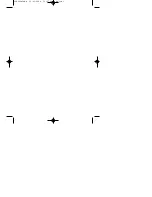
MANU-MAXIMUS-02
Maximus Reference Manual
B-3
Revision-02
Appendix B: Badge Specifications
Optical Barcode Badges
Optical Barcode Badges
G
uidelines
This section provides recommendations and requirements for Maximus optical badge readers.
This is not meant as a comprehensive specification, but as a guideline, which ensures high read
rates. This section pertains solely to the printing of Code 3 of 9 barcodes.
Physical Specifications
The following are the physical specifications for an optical barcode badge:
•
The maximum badge thickness is 0.040 inch.
•
The laminate covering the barcode must be no thicker than 0.010 inch and
transparent to light in the 600 to 880 nanometer wavelength range. The external
surface of the material may have a matte finish.
Printing Specifications
Refer to
for an illustration of a typical optical badge barcode size and position. The
following are the detailed printing specifications for an optical barcode badge:
•
The print contrast ratio (PCR) of the barcode should be greater than 75% for light in
the 600 to 880 nanometer wavelength range.
•
The minimum width of a narrow barcode element should be 0.010 inch.
•
The ratio of wide to narrow bar code elements depends on the barcode. For Code 3
of 9 the ratio is in the range of 2.2:1 to 3:1.
•
A quiet zone of at least 0.250 inch is required on each end of the barcode. There can
be no transitions in this are such as a stock to stock seam or the beginning of the
blocking pattern.
•
Any vertical cutouts designed to accommodate attachments clips or devices must be
located no lower than one (1) inch from the bottom edge of the badge to prevent
interference with the bar code reader slot.
•
A blocking pattern may be used over the barcode to resist copying. Red is typically
used for IR badges. The blocking pattern must be transparent to light in the 600 to
880 nanometer wavelength range. Some IR badges have a copy protection layer.
•
The barcode height should be at least 0.500 inch.
•
The barcode should be located such that it is parallel to one side of the card and the
center-line of the code is 0.350 inch.
•
A high quality printing method should be used which will limit bar imperfections
(voids, smears) to 0.005 inch diameter or less.
















































